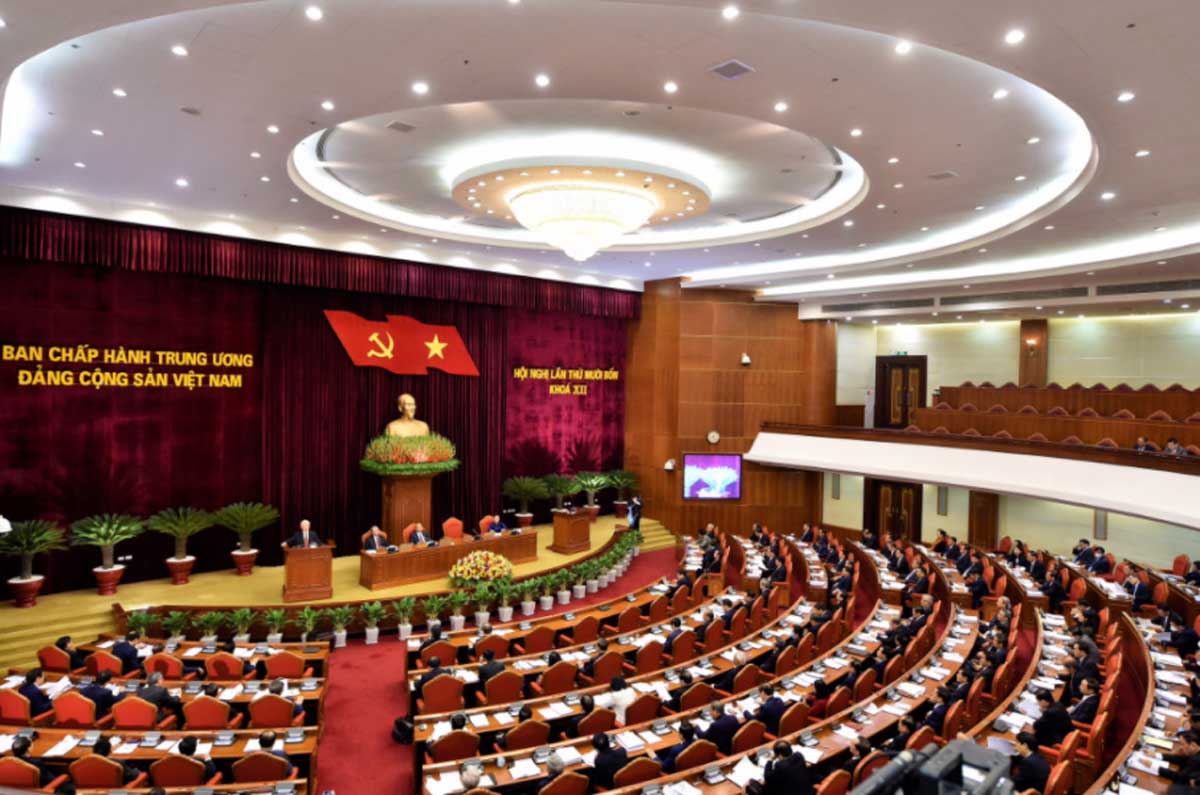Southern Section high school football playoff pairings
HIGH SCHOOL FOOTBALL
SOUTHERN SECTION PLAYOFFS
(Games at 7 p.m. unless noted)
FRIDAY’S SCHEDULE
First Round
DIVISION 2
Corona del Mar at Murrieta Valley
Tustin at Rancho Cucamonga
Yorba Linda at Los Alamitos
Downey at San Juan Hills
Beaumont at San Clemente
Damien at Vista Murrieta
Leuzinger at Crean Lutheran
Chaminade at Chaparral
DIVISION 3
Murrieta Mesa at Bishop Amat
Oak Hills at Oxnard Pacifica
Laguna Beach at Sherman Oaks Notre Dame
Mira Costa at Chino Hills
Aquinas at Dana Hills
Palos Verdes at Valencia
Huntington Beach at Edison
Inglewood at Capistrano Valley
DIVISION 4
Muir at Charter Oak
San Jacinto at Bishop Diego
Great Oak at Cajon
Villa Park at Westlake
St. Bonaventure at Oaks Christian
Paraclete at Long Beach Wilson
Western at Cathedral
El Modena at La Habra
DIVISION 5
Redondo Union at Torrance
Etiwanda at St. Paul
Bonita at Northview
Newbury Park at Loyola
Millikan at Aliso Niguel
Lakewood at La Serna
Rio Hondo Prep at Thousand Oaks
Orange at Troy
DIVISION 6
Eastvale Roosevelt at Crespi
Lancaster at Burbank
Alta Loma at St. Pius X-St. Matthias
Los Altos at Upland
El Toro at Orange Vista
Summit at Agoura
Salesian at Ventura
Riverside King at Moorpark
DIVISION 7
Claremont at Palm Springs
Mayfair at Hart
Barstow at Serrano
La Canada at West Covina
North Torrance at Apple Valley
Segerstrom at Victor Valley
Schurr at Saugus
El Segundo at Calabasas
DIVISION 8
Marina at Palm Desert
Patriot at Elsinore
Beckman at La Mirada
La Quinta at Fullerton
Temecula Valley at Irvine
Santa Ana Calvary Chapel at Quartz Hill
Mary Star of the Sea at Brea Olinda
St. Genevieve at St. Monica
DIVISION 9
Ramona at Silverado
Cerritos at Fillmore
Moreno Valley at Hesperia
Vista del Lago at Norte Vista
Norwalk at Warren
Chino at Cerritos Valley Christian
San Dimas at Rowland
Riverside Poly at Corona Santiago
DIVISION 10
Oak Park at Village Christian
Tahquitz at Heritage Christian
Portola at Brentwood
Pasadena at Santa Monica
El Rancho at Garden Grove Pacifica
West Torrance at Liberty
St. Margaret’s at Redlands East Valley
Hillcrest at Monrovia
DIVISION 11
El Monte at St. Anthony
Western Christian at Bell Gardens
Maranatha at Baldwin Park
Jurupa Hills at Shadow Hills
Gahr at Chaffey
Valley View at Dominguez
Diamond Bar at Palmdale
San Marcos at South Pasadena
DIVISION 12
Costa Mesa at Yucca Valley
Rialto at Grace
Perris at Citrus Hill
Coachella Valley at Banning
Nogales at Bellflower
Ganesha at Colton
Ocean View at Santa Paula
Arroyo Valley at Desert Christian Academy
DIVISION 13
Pacific at Saddleback
Santa Rosa Academy at Heritage
Desert Hot Springs at Woodbridge
Nordhoff at Buena Park
La Puente at Kaiser
Fontana at Viewpoint
Hacienda Heights Wilson at Linfield Christian
Montebello at Rancho Alamitos
DIVISION 14
Channel Islands at South El Monte
Vasquez at Indian Springs
Bolsa Grande at Ontario
San Jacinto Valley at Miller
Bassett at Alhambra
Anaheim at Webb
Gabrielino at Trinity Classical Academy
Godinez at Pioneer
FRIDAY, NOVEMBER 14
Quarterfinals
DIVISION 1
Orange Lutheran at St. John Bosco
Santa Margarita at Sierra Canyon
Mission Viejo at Mater Dei
Servite at Corona Centennial
Note: Quarterfinals (Divisons 2-14) Nov. 14; Semifinals (all divisions) Nov. 21; Finals (all divisions) Nov. 28-29.
U.S. kills three people in latest strike against an alleged drug boat

Nov. 2 (UPI) — The United States killed three people in its latest strike against alleged drug trafficking boats in the Caribbean, U.S. Defense Secretary Pete Hegseth has announced.
Hegseth said in a post to social media Saturday that American forces conducted a kinetic strike against the vessel in international waters.
He said three “narco-terrorists” were on board and all three were killed.
“These narco-terrorists are bringing drugs to our shores to poison Americans at home — and they will not succeed,” he said. “The department will treat them exactly how we treated Al-Qaeda. We will continue to track them, map them, hunt them and kill them.”
At least 64 people have now been killed by the U.S. in 15 strikes on alleged drug trafficking boats in the Caribbean and the Pacific Ocean since they began in September.
The strikes have been celebrated by families who have lost their children to fentanyl poisoning, some of whom recently rallied in the nation’s capital for a day of remembrance.
“One boat, two boat, three boat — boom!” a mother who lost her 15-year-old son to Percocet laced with fentanyl told Fox News is how she feels about the strikes on boats allegedly transporting drugs to the United States. “Who did it? Trump did it!”
President Donald Trump in September told reporters that he had authorized the CIA to operate in Venezuela during the summer as the Pentagon was directing a slow military buildup in the waters off the South American country.
On Oct. 24, weeks into the anti-drug trafficking campaign, Hegseth directed the USS Gerald R. Ford Carrier Strike Group to transit to the Caribbean. The group includes three destroyers, in addition to the aircraft carrier.
There already were eight naval surface vessels, a submarine and roughly 6,000 soldiers deployed to the area before the strike group was ordered there from the Mediterranean.
Trump, who notified Congress that he was engaged in conflict with drug cartels, has said in recent weeks as the naval presence has grown that he is considering whether to allow strikes inside Venezuela to combat the cartels and weaken Venezuelan President Nicolas Maduro‘s administration.
But the strikes have raised concerns of escalating an conflict that could to war with Venezuela and Colombia, according to reports.
U.S. Sen. Tim Kaine, D-Va., filed a bipartisan bill that aims to prevent the Trump administration from entering a full-throated war with Venezuela.
Critics of the Trump administration’s actions have expressed that only Congress can declare war.
On Friday, the office of the U.N. High Commissioner for Human Rights said they violate international law and amount to extrajudicial killings.
“Under international human rights law, the intentional use of lethal force is only permissible as a last resort against individuals who pose an imminent threat to life,” High Commissioner Volker Türk said.
“Based on the very sparse information provided publicly by the US authorities, none of the individuals on the targeted boats appeared to pose an imminent threat to the lives of others or otherwise justified the use of lethal armed force against them under international law,”
Barcelona beat Elche 3-1 to stay in touch with La Liga leaders Real Madrid | Football News
Dominant football win moves defending La Liga champions to second place in the standings, five adrift of archrivals Madrid.
Published On 2 Nov 2025
Lamine Yamal, Ferran Torres and Marcus Rashford struck for Barcelona as they earned a 3-1 win over Elche in La Liga to bounce back from last weekend’s El Clasico defeat and move back into second place to trail leaders Real Madrid by five points.
Barca continued to struggle in defence and Elche had chances to cause an upset on Sunday, scoring through Rafa Mir, with the striker also twice hitting the woodwork.
Recommended Stories
list of 4 itemsend of list
Hansi Flick’s Barca have failed to keep a clean sheet in six consecutive league games, in the midst of an injury crisis.
The champions were missing Pedri, Gavi, and Joan Garcia among others, but were able to bring on Robert Lewandowski and Dani Olmo following spells out of action.
Teenage star Lamine Yamal underwhelmed in last week’s defeat by Real Madrid after coming back from a groin issue, but looked more spritely against Elche.
Coached by Eder Sarabia, a former Barcelona assistant coach under Quique Setien, the ninth-placed visitors came to play and impressed.
Barca took the lead after nine minutes when Alejandro Balde drove forward and fed Yamal in the area.
The winger took a touch to set himself and then whipped a clinical finish past former Barca goalkeeper Inaki Pena, a teammate of his last season.
Three minutes later, Torres doubled the hosts’ advantage, tapping home after Fermin Lopez broke into space down the left and provided an inch-perfect cross.
The striker revealed a T-shirt paying tribute to Valencia, his home region, a year on from the deadly flooding that hit Spain’s east coast.
Lopez and Rashford fired narrowly off-target while Pena saved from Torres as Barca squandered some presentable chances.
Mir pulled a goal back shortly before half-time. Barca tried to catch the forward offside, but he was in his own half when he was played in. Mir bent a shot past Ronald Araujo and Barca goalkeeper Wojciech Szczesny and in at the far post.
Torres might have scored again before the interval, but Pena produced a superb save to tip his strike to safety.
Early in the second half, Mir clipped the top of the crossbar with a curling effort as Elche battled well.
Rashford sealed Barca’s victory with a superb finish after Lopez picked him out with a cross, for his second league goal of the campaign.
Veteran goalkeeper Szczesny pushed a Mir effort onto the post to save Barca sweating over their advantage in the final stages.
“It was very important to start strong and intense. From there, we could take the game where we wanted it to go,” Torres told DAZN.
“We knew the type of game they were going to play, and we started very strong. We were a bit off afterwards, but we found our spirit and our intensity again in the second half.”
Iconic Brit band reveal inspiration behind hotly-anticipated 9th album
Damon Albarn has opened up about his emotional journey while recording Gorillaz’ upcoming album.
The singer and his bandmate Jamie Hewlett poured the grief of losing their dads into their ninth record, The Mountain, and Damon revealed he scattered his father’s ashes in India while making the collection.
“Both Jamie and I lost our fathers,” Damon said.
“We did two quite amazing, magical trips to India.
“India is a very interesting place to carry grief, because they have a very positive outlook on death.
“England is just really bad at dealing with death.
“In a way, I think this record is in that tradition of celebrating their lives.
“I did things I’d never done before. I swam in the Ganges in Varanasi.
“I watched the bodies being burnt on the banks of the Ganges.
“In England when we cremate a body we don’t even look at the bodies, it’s covered up immediately and then it’s put in the fire, the little curtains close and that’s it.
“On the banks of the Ganges, every family is there with the body wrapped in a shroud and they’re burnt, and it’s going on everywhere. It goes on 24 hours a day and it’s been going on for thousands of years.
“I took my dad’s ashes there and I cast them in the river. It was very beautiful.”
Indian culture helped shape the record — which will be released in March — with the album’s cover art featuring the title in Devanagari, a script used to write the Indian Sanskrit language.
And this time around the pair will not make their famous, animated music videos and instead are creating a one-off production.
Damon added: “We’re making a full eight-minute thing.
“This is why there are no videos at the moment, because it’s serious stuff. It’s really great that Jamie is concentrating on doing one animated thing.
“It’s a big amount of work, any animation. It’s kind of our Achilles’ heel because no other band has to spend that kind of time just to produce one small thing.
“So let’s make it a piece of art in itself and not really rely on it for the promotional aspect of things and let it breathe in its own way.
“I think fans are going to love every aspect of this record.”
Personally, I cannot wait.
Jen’s perfect pairing
Jennifer Lawrence put on her poshest frock to party in the Big Apple after promoting her new film, Die My Love.
The Hunger Games star appears alongside Robert Pattinson in the black comedy, out this Friday.
And the pair coordinated their outfits for the New York premiere at the AMC Lincoln Square Theater.
J-Law then changed into a blue gown before heading out for a night on the town with her pals.
The actress has a busy few months coming up. She is starring in and producing upcoming murder-mystery movie The Wives, before kicking off a new project with legendary director Martin Scorsese and Leonardo DiCaprio.
Jen and Leo are set to play the leads in a terrifying film adaptation of Peter Cameron’s ghost story, What Happens at Night.
She did the chart double last month but Olivia Dean is keeping her feet firmly on the ground.
The singer scored No1s with her album The Art of Loving and single Man I Need, becoming the first British solo female artist to top both charts simultaneously since Adele in 2021.
Asked whether she’s let her success go to her head, she said: “I don’t think so. I feel like I try really hard and think all the time about not becoming a p***k. That would just be horrible.
“I’ve met some and it’s just like, ‘Oh no, it got to you’.”
On how success depends on the people around you, Olivia continued: “A lot of people work really, really hard. It’s really important to recognise that yes, you’ve worked on your skill or your craft, but all the people around you had to believe in it and be there to make it happen as well.
“It takes a village of people to make an album or do a campaign. There’s a lot that people don’t see.”
It sounds like Olivia has a lot of goals in the future, though – including headlining Glastonbury and releasing an album of standards.
On the And The Writer Is… with Ross Golan podcast, Olivia was also asked if she had written a musical yet.
She said: “No, but I would like to in the future. It’s definitely on the bucket list for me.”
Time to say ’ello to Eli
Hot prospect Eli released debut album Stage Girl at the weekend, jam-packed with infectious melodies.
It looks like her label, RCA Records – also home to Britney Spears, P!nk and Shakira – has unearthed another gem.
But her collection of tunes also features references to a battle with her identity, which the American singer has now overcome.
In an exclusive interview, Eli, who is a trans woman, said of her album: “It was made in a flow state.
“But that was after a year or two of complete wits’ end, last straw, end of the rope, repressing everything under the sun as a human being for 20 years of my life.
“I was just like, ‘I need this joy and I need this super-extravagant pop’.”
Part of her journey of discovery is related to listeners in album highlights Girl of Your Dreams and Falsetto, and Eli now hopes that her music will help people to accept those in the queer community.
She explained: “I like the idea that this is going to play in Walmart in Kansas, for the lady who thinks I’m the spawn of Satan.
“And she’s going to be like, ‘Wow, this song is so good’.
“I feel like there is a sort of trickle-down effect of awareness of my humanity and trans humanity in general.”
Eli is already feeling the love following her album release – Mark Ronson, Demi Lovato and Zara Larsson have all voiced their support and her fan base is growing and growing.
Eli added: “I feel so excited by the community I’m existing in in LA right now.
“I feel like everyone is so supportive of each other.
“And it’s so refreshing and so cool.”
THE WEEK IN BIZ
Today: Jack Whitehall and David Duchovny will be at the BFI on London’s South Bank for the world premiere of their new psychological thriller Malice, ahead of its launch on Prime Video next Friday.
Wednesday: Bastille launch their From All Sides tour in Plymouth, celebrating 15 years of the band.
Thursday: Bums on sofas for the finale of The Celebrity Traitors on BBC One at 9pm.
Friday: Taylor Swift, Lady Gaga and Sabrina Carpenter are all expected to receive nods as the nominations are announced for the Grammy Awards ahead of the ceremony in February.
Dazzled by Doja
Doja Cat looked a true member of the glitterati as she joined A-listers for a night out.
The rapper sported a sparkly orange dress at the LACMA Art+Film Gala in Los Angeles and completed the ensemble with a curly blonde wig in a nod to Marilyn Monroe.
This is not the first time she has gained inspiration from the Hollywood legend. At the 2022 Grammys, she wore a custom-made crystal Versace gown – which took 475 hours to make.
Doja attended the fundraising bash alongside a host of stars, including actresses Demi Moore, Salma Hayek and Cynthia Erivo all of whom dazzled in their ’fits.
Keep sparkling, ladies.
Robyn’s return so sexi
Singer Robyn is planning to drop a new single in the next few weeks, then her ninth album in 2026.
It is seven years since the Swedish-born star put out her last collection, Honey, and an industry insider tells me the new one, with alluring title Sexistential, promises to be bigger and better than ever before.
They said: “Robyn has spent years working on this music and has been really inspired by loads of up-and-coming artists.
“She has worked with some very cool people and all the stops are being pulled out for this to be her biggest record in decades.”
Robyn has joined Gracie Abrams and Charli XCX on stage for surprise performances over the past year.
But by the sounds of it, next year she will likely be performing plenty of big gigs of her own.
Cat Burns opens up about losing her grandad and breaking up with a long-time girlfriend on her new album How to Be Human.
The singer and Celebrity Traitors star told The Sunday Times’ Style mag: “While grieving, a quote that stood out to me was: ‘Grief is just love with no place to go’. That helped guide the message of the album.”
A Brum deal for Benson
Benson Boone is due back on stage tonight at London’s O2 Arena after he was forced to cancel his Birmingham show on Saturday.
The Beautiful Things singer, who is on his American Heart World Tour, told fans he wouldn’t have been able to put on the show at the Utilita Arena due to problems with his voice.
In a statement, he told fans: “Birmingham I am so so sorry but I will not be able to perform. I have tried everything I can to revive my voice, but I cannot give you the show I’d like to be able to give you with the condition of my throat right now.
“I’m working with my team to find a date to reschedule as soon as possible. I promise I will do everything in my power to make it up to you. I love you guys so much.”
We’re sending you our best, Benson, and we hope you can make the show tonight.
Park stars as Man Utd hold off Brighton to stay unbeaten
Manchester United continue their unbeaten start with a 3-2 victory against Brighton and Hove Albion at Broadfield Stadium in the Women’s Super League.
Source link
India’s women beat South Africa to claim first Cricket World Cup | Cricket News
India’s women post 298-7 in Navi Mumbai before bowling South Africa out for 246 to claim the 2025 Cricket World Cup.
India’s women have lifted the Cricket World Cup for the first time after beating South Africa by 52 runs in Navi Mumbai, India.
Reaching the final for a third time, Harmanpreet Kaur’s side dominated the contest from the off at DY Patil Stadium on Sunday, although South Africa captain Laura Wolvaardt did her best to spoil the hosts’ party in the run chase.
Recommended Stories
list of 4 itemsend of list
Replying to India’s 298-7, Wolvaardt led from the off and totalled 101 off 98 when she was eventually caught in the deep off the bowling off Deepti Sharma, who finished with 5-39.
The support was not there for Wolvaardt, unlike that enjoyed throughout a team effort with the bat by India, as South Africa regularly lost wickets at the other end before being bowled out for 246 in the 46th over.

Wolvaardt’s heroic effort added to the century she scored in the semifinal win against England on Thursday. She is only the second player to achieve the feat of the back-to-back centuries at this stage of the competition after Alyssa Healy did so in Australia’s victorious run in the 2022 edition.
Neither team has lifted the trophy; indeed, this was South Africa’s first final.
India had come close twice before, reaching the final in 2005 and 2017, losing to Australia and England, respectively.
This was also the first women’s World Cup final that did not involve either Australia or England, the former being the record winners with seven victories to their name.
Having been put in, after a long delay due to rain, India posted the second-highest total in a women’s World Cup final. But they will feel they should have comfortably cleared 300, having reached 151-1 at the halfway stage of their innings.
Opener Smriti Mandhana’s 45 meant the India batter finished with 434 runs for the tournament.
It puts her top of India’s list of run scorers at a World Cup ahead of Mithali Raj, who registered 409 in the 2017 edition.
The limelight on the day belonged to her opening partner, however, as Shafali Verma struck 87 off 78.

Deepti Sharma’s run-a-ball 58 kept the momentum going through the middle over, while Richa Ghosh thumped two sixes in an innings of 34 off 24 late on that marked the best strike-rate of the innings.
South Africa started the chase solidly enough, the opening pair bringing up the fifty partnership in the 10th over. The loss of Tazmin Brits, run out by a brilliant piece of fielding by Amanjot Kaur for 23, started a wobble, though.
Anneke Bosch pushed back a painful six-ball duck before being trapped LBW by Sree Charani.
Verma then came to the party with the ball, picking up Sune Luus and Marizanne Kapp to leave South Africa reeling on 123-4 in the 23rd over.
When Sinalo Jafta fell in the 30th with her side 148-5, it was difficult to see a way back for a team hoping to be the first senior side from their country to lift a major International Cricket Council (ICC) title.
By the time Wolvaardt’s innings was done, India’s women knew they were about to go one better than their male counterparts, who similarly hosted the 2023 edition only to be denied by Australia in the final.

Drinking water in Tehran could run dry in two weeks, Iranian official says | Water News
A historic drought in the country has culminated in a ‘100 percent drop in precipitation’ in the Tehran region.
Published On 2 Nov 2025
The main source of drinking water for residents of the Iranian capital Tehran is at risk of running dry within two weeks, according to state media, due to a historic drought plaguing the country.
The Amir Kabir Dam, one of five that provide drinking water for Tehran, “holds just 14 million cubic metres of water, which is eight percent of its capacity”, the director of the capital’s water company, Behzad Parsa, was quoted as saying by the IRNA news agency on Sunday.
Recommended Stories
list of 3 itemsend of list
At that level, it can only continue to supply Tehran with water “for two weeks”, he warned.
The announcement comes as the country experiences its worst drought in decades. The level of rainfall in Tehran province was “nearly without precedent for a century”, a local official declared last month.
The megacity of more than 10 million people is nestled against the southern slopes of the often snow-capped Alborz Mountains, which soar as high as 5,600 metres (18,370 feet) and whose rivers feed multiple reservoirs.
A year ago, the Amir Kabir dam held back 86 million cubic metres of water, Parsa said, but there had been a “100 percent drop in precipitation” in the Tehran region.
Parsa did not provide details on the status of the other reservoirs in the system.
According to Iranian media, the population of Tehran consumes around three million cubic metres of water each day.
As a water-saving measure, supplies have reportedly been cut off to several neighbourhoods in recent days, while outages were frequent this summer.
In July and August, two public holidays were declared to save water and energy, with power cuts an almost daily occurrence amid a heatwave that saw temperatures rise beyond 40 Celsius (104 Fahrenheit) in Tehran and exceed 50C (122F) in some areas.
“The water crisis is more serious than what is being discussed today,” Iranian President Masoud Pezeshkian warned at the time.
Water scarcity is a major issue throughout Iran, particularly in arid provinces in the country’s south, with shortages blamed on mismanagement and overexploitation of underground resources, as well as the growing impact of climate change.
Iran’s neighbour Iraq is experiencing its driest year on record since 1993, as the Tigris and Euphrates Rivers, which flow into the Persian Gulf from West Asia, have seen their levels drop by up to 27 percent due to poor rainfall and upstream water restrictions, leading to a severe humanitarian crisis in the country’s south.
The ‘wild and weird’ rise of ‘KPop Demon Hunters’ phenoms Huntr/x
This summer, Netflix’s animated hit “KPop Demon Hunters” might have created the most popular K-pop girl group in America. And seemingly the only people unaware of that distinction are its members.
“Is that what it is?,” asks Rei Ami, who with fellow artists Ejae and Audrey Nuna forms the film’s fictional trio Huntr/x. “Is that what it’s being labeled as?”
The stats are behind them: “Golden,” a contender for the Oscar for original song, hit No. 1 on the Billboard Hot 100 for more than eight consecutive weeks, with three other numbers earning a place in the Top 10. As a result, the film’s soundtrack hit No. 1 on the Billboard 200 and recently went platinum. With success has come an array of other opportunities as well. The group have since made a cameo on “Saturday Night Live” and performed on “The Tonight Show Starring Jimmy Fallon.”
-
Share via
But as Ejae points out, theirs has not been the usual route to K-pop stardom. A former K-pop trainee herself, she notes that many hopefuls spend years developing their craft and chemistry with future group members. “We were all individually our own person. They had their music career, and I have my career as a songwriter,” she says. “[Becoming a K-pop group] later is unheard of with K-pop training. You do it when they’re kids, before anything [can develop], so they can shape them together, whereas we’re our own individuals coming together. Having this synergy is incredibly rare.”
That’s what singing in the most-watched Netflix film of all time will do for you. Premiering in August, “KPop Demon Hunters” propelled the members of Huntr/x — all of them already established in the industry, Nuna and Ami as artists and Ejae, who recently released her first solo single, as a songwriter for K-pop groups — into a new intensity of spotlight. (Ejae also wrote several tracks for the film, including “Golden,” with co-writers Mark Sonnenblick, Ido, 24 and Teddy.)



1. Rei Ami is the singing voice for Zoey. 2. Ejae is the singing voice for Rumi. 3. Audrey Nuna is the singing voice for Mira. (Justin Jun Lee / For The Times)
“We were thrown together, basically,” says Nuna. “I’ve seen photos of us and I [thought], ‘Damn, we look like we were perfectly calculated to be in this group.’ The balance is nuts. But to think how serendipitous it was that this happened — we didn’t audition in rooms or go through multiple rounds of pairings to find each other… It just speaks to the beauty of the universe and how things go and when things just happen.”
In fact, the singers did not even meet until nearly five months ago, on the carpet at the film’s premiere. They recorded their parts separately with executive music director Ian Eisendrath, who then worked with the music team to edit them all together.
Ami was the last to record her part, which meant she got to hear “This Is What It Sounds Like” in its entirety with all the voices meshed together. The moment recalled the film’s final scene, in which Huntr/x — whose members double as the demon hunters of the title — reunites to fight the main villain to the sounds of the very same song, when “This Is What It Sounds Like” plays.
“I got to hear the song in full and all of our harmonies for the first time,” she recalls. “I was completely moved. I knew in my heart that this was going to be great.”
Still, they never expected the film to become a global phenomenon, resulting in their now chaotic schedules filled with press interviews, panel engagements, media appearances and special performances. Ami smiles, “We’re doing our best.”
Through it all, they’ve hyped each other’s achievements and held hands while expressing their appreciation for each other.
“These women have worked so hard on their journeys individually,” says Ami. “The industry has been so tumultuous, and the amount of pain, struggle, blood, sweat and tears that we’ve individually had to deal with … These two girls are the only ones in the world who will fully understand what I’m going through. I can’t talk to anyone else about this. Only they understand, and I feel so supported and not alone.”
They all clasp hands, with Ami telling the others, “I love you guys.”
And, for all the challenging moments, they are immensely grateful for the chance to fulfill their dreams. They all express their gratitude for the opportunity, as it has always been their dream.
“Literally, a month before the movie came out, I was doubting myself as a songwriter,” Ejae explains. “My goal was to get No. 1 on the Hot 100. I was going to do that — move to California, write so many sessions, and get No. 1. It felt impossible.”

“Those are all things we have on our bucket list,” Ami, right, says of the prospect of performing at the Oscars or Grammys.
(Justin Jun Lee / For The Times)
Ami becomes emotional about the film’s success when she talks about its impact on her career.
“I’m so blessed,” she says, holding back tears. “It’s really introduced me to more fans and new fans. This whole experience has taught me a lot about myself and what I want to do as an artist. My dreams are coming true.”
That hasn’t necessarily been the experience for her groupmates, though. “It takes a very long time [for me] to process and metabolize emotions,” Nuna says of her own lack of waterworks. “I’ve never wanted somebody to cry so much in my life,” Ami chimes in, laughing. “Feel something!”
The “instant chemistry” displayed in their interview was recently on display when the three were asked to perform “Golden” together for “The Tonight Show Starring Jimmy Fallon” — their first as a group. And the more they rehearsed, the more they cohered. Just like a real K-pop group.
“It’s really wild and weird,” says Nuna. “Honestly, the mesh of our voices just felt so intuitive. It was very organic and easy. The song is not easy, but the mesh and connecting were. It was literally our first time singing together, and I feel like we were hearing overtones in our harmonies and stuff, because they’re just really locked in.”
Awards buzz, for both the Oscars and the Grammys, has come as a surprise to the group, but it leads to questions about reuniting Huntr/x onstage at the biggest pop culture events of the year.
“[Performing at the Oscars or Grammys] would be the biggest deal,” says Ami. “I think we can all relate. That’s probably one of the highest accolades and achievements you can accomplish as an artist, songwriter, and producer. Those are all things we have on our bucket list.”
The trio hasn’t thought far enough ahead about an actual performance on either stage, as they’ve only recently begun rehearsing together.
“Jimmy Fallon will be a good practice,” Ejae laughs. “Good warm-up preparation.”
Indeed, though they have joked about forming a (real-life) K-pop group, all three are busy with individual projects — at least for now.
“If we were to get together, the charts better watch out!” Ami shouts. “You might not ever see another name other than us.”

The Los Angeles Times’ top 25 high school football rankings
A look at the top 25 high school football teams in the Southland at the end of the regular season:
Rk. School (record) result; Next game; last week ranking
1. SIERRA CANYON (10-0) def. Loyola, 52-3; D1 vs. Santa Margarita, Nov. 14; 2
2. ST. JOHN BOSCO (9-1) lost to Mater Dei, 36-31; D1 vs. Orange Lutheran, Nov. 14; 1
3. CORONA CENTENNIAL (9-1) def. Chaparral, 60-29; D1 vs. Servite, Nov. 14; 3
4. MATER DEI (7-2) def. St. John Bosco, 36-31; D1 vs. Mission Viejo at Santa Ana Staidum, Nov. 14; 6
5. MISSION VIEJO (9-1) def. Los Alamitos, 76-49; D1 vs. Mater Dei at Santa Ana Stadium Stadium, Nov. 14; 4
6 SANTA MARGARITA (7-3) def. JSerra, 41-14; D1 at Sierra Canyon, Nov. 14; 5
7. SERVITE (6-4) def. Orange Lutheran, 30-28; D1 at Corona Centennial, Nov. 14; 8
8. ORANGE LUTHERAN (2-8*) lost to Servite, 30-28; D1 at St. John Bosco, Nov. 14; 9
9. LOS ALAMITOS (8-2) lost to Mission Viejo, 76-49; D2 vs. Yorba Linda, Friday; 7
10. OXNARD PACIFICA (10-0) def. Bishop Diego, 46-33; D3 vs. Oak Hills, Friday; 11
11. LEUZINGER (8-1) def. Lawndale, 45-10; D2, at Crean Lutheran, Friday; 12
12. MURRIETA VALLEY (7-3) def. Eastvale Roosevelt, 48-13; D2 vs. Corona del Mar, Friday; 14
13. SAN JUAN HILLS (1-9^) def. Tesoro, 41-7; D2 vs. Downey, Friday; 15
14. BEAUMONT (7-2) def. Redlands East Valley, 43-6; D2 at San Clemente, Friday; 16
15. DOWNEY (9-1) def. Dominguez, 34-0; D2 at San Juan Hills, Friday; 17
16. CREAN LUTHERAN (10-0) def. Laguna Hills, 50-7; D2, vs. Leuzinger, Fridays; 18
17. RANCHO CUCAMONGA (7-3) def. Chino Hills, 31-24; D2 vs. Tustin, Friday; 19
18. VISTA MURRIETA (7-3) lost to Norco, 17-7; D2, vs. Damien, Friday; 13
19. VALENCIA (9-1) def Castaic, 63-0; D3 vs. Palos Verdes, Friday 21
20. DAMIEN (8-2) def. Ayala, 35-13; D2 at Vista Murrieta, Friday; 22
21. AQUINAS (9-1) def. Village Christian, 42-12; D3 at Dana Hills, Friday; 23
22. YORBA LINDA (9-1); def. Corona del Mar, 35-28; D2 at Los Alamitos, Friday; NR
23. CORONA DEL MAR (9-1) lost to Yorba Linda, 35-28; D2 at Murrieta Valley, Friday; 10
24. CHINO HILLS (7-3) lost to Rancho Cucamonga, 31-24; D3 vs. Mira Costa, Friday; 20
25. PALOS VERDES (7-3) def. Mira Costa, 18-15; D3 at Valencia, Friday; NR
*-two forfeits / ^-nine forfeits
Suspects arrested after mass stabbing on British train

Forensic teams work at the scene at Huntingdon railway station, where a London-bound train stopped after several people were stabbed. Photo by Tayfun Salci/EPA
Nov. 2 (UPI) — Two suspects have been arrested in Saturday night’s mass stabbing incident on a British train, police said Sunday, while dismissing concerns it was a terror attack.
Officers were called at 7:42 p.m. local time Saturday to respond to reports of multiple people stabbed on board the 6.25 p.m. train from Doncaster to London King’s Cross station, British Transport Police said in a statement.
The train was forced to stop in the small town of Huntingdon, where police and paramedics boarded the train.
The two suspects were arrested within eight minutes of the first 911 call, police said.
Police described the suspects as a 32-year-old Black man and a 35-year-old man of Caribbean descent, both of whom were natural-born British nationals.
They have been detained on suspicion of attempted murder and remain in custody for questioning.
In total, paramedics took ten people by ambulance to a local hospital and another later self-presented. Four victims have been discharged but two people remain in life-threatening condition.
Witnesses described seeing bloody handprints as panic spread through the train cars in comments to The Guardian.
“We declared a major incident yesterday and Counter Terrorism Policing were initially supporting our investigation however at this stage there is nothing to suggest this is a terrorist incident,” police superintendent John Loveless said. “This is a British Transport Police investigation.”
Loveless’ comments came after British Home Secretary Shabana Mahmood urged people not to speculate about the attack.
The train station in Huntingdon remains closed and police said riders can see increased police presence throughout the train service on Sunday.
British Prime Minister Keir Starmer called the stabbing an “appalling incident” and “deeply concerning” in a statement on social media, while former Prime Minister Rishi Sunak said it happened on a line he uses regularly.
“My thoughts are with all those affected, and my thanks go to the emergency services for their response,” Starmer said. “Anyone in the area should follow the advice of the police.”
ICC Women’s World Cup final: Shafali Verma and Deepti Sharma star as India beat South Africa for historic victory
With both teams vying for their first World Cup title, the pre-match talk was all about who could handle the occasion – India with the enormous amount of expectation, contrasted with whether South Africa could use the underdog tag in their favour.
With rain washing out any hopes of starting on time, it was inevitable the captain who won the toss would bowl first but the Navi Mumbai surface remained batter-friendly as it had been in India’s high-scoring semi-final against Australia, exemplified by Smriti Mandhana and Verma calmly cruising to 64-0 in the powerplay.
It was actually South Africa’s bowlers who appeared consumed by the occasion as they bowled too wide to the openers, who reeled off the boundaries with ease, before Mandhana was caught behind off Chloe Tryon and Verma chipped Ayabonga Khaka to mid-off.
The Proteas’ ground fielding was brilliant, but they were guilty of dropping five catches including a crucial drop by Anneke Bosch with Verma on 56, while Deepti was also put down on 35 and 37.
Verma was visibly distraught to miss out on a World Cup century but it was a staggering knock considering the lateness of her inclusion in the side and the magnitude of the game, and its attacking nature was invaluable in taking the pressure off the tournament’s poster girl, Mandhana.
Jemimah Rodrigues, the semi-final hero, fell for 24 two overs after Verma which gave South Africa a chance to regain control, but India showed impressive composure in keeping partnerships ticking over, anchored by Deepti, before Richa Ghosh’s dynamic 34 from 24 balls ensured they finished with a late flourish.
Though it required a record chase, there was a sense that India did not have enough to feel completely comfortable – only adding 69 in the final 10 overs for the loss of three wickets – with the context of India’s semi-final chase of 339.
Though Deepti’s all-round performances have been sensational all tournament, few would have predicted that Verma would also be her accomplice with the ball.
Alan Carr flees UK before Celebrity Traitors final as he fears being ‘most hated man’
Alan Carr has fled the UK ahead of the final of The Celebrity Traitors, as he’s convinced he’s the ‘most hated man in the country’ after killing off his co-stars
Alan Carr has fled the country before The Celebrity Traitors finale, declaring: “I’m the most hated man in the UK.” The comedian brutally eliminated beloved actress Celia Imrie in full view during Thursday night’s episode, and revealed his backstabbing antics on the programme have left him deeply unpopular.
Nevertheless, the 49-year-old confesses he reckons his fellow celebrities are “thick” for failing to spot his obvious eliminations. Chatting whilst taking his nephew and niece to Universal Studios in Orlando, Florida, Alan said: “That’s why I’m in America.
“I’m the most hated man in the UK. I’ve had to come here to Orlando to get away from it all – everyone hates me. My Christmas card list is getting smaller and smaller.”, reports the Daily Star.
READ MORE: Celebrity Traitors star is unrecognisable in throwback picture ahead of show finalREAD MORE: Celebrity Traitors star pipped for top BBC presenting job after wining over fans with his sleuth skills
Yet he reckons his showbiz mates should have spotted his blatant murders – particularly as he struggles to hide his reactions. Speaking to Heart radio in Orlando, Alan – who also eliminated his mate Paloma Faith on the programme – added: “I’ve got loads of celebrity friends, but are they thick?
“I’m giggling when people are murdered. When they don’t come down for breakfast, I just stick cheese in my mouth.” He went on: “It’s stressful murdering every day… I’m getting a taste for it.”
Fellow Traitor Cat Burns, 25, confesses the spotlight is all “a bit mad” and revealed she is managing it by “mainly just staying at home”. Meanwhile, recently eliminated star Kate Garraway has backed Alan to triumph in the competition.
The Good Morning Britain host declared: “I think he’s going to win. I don’t know. I’m going to say it now.” She revealed that his strategy has been to burst into fits of laughter during loyalty challenges, particularly whilst playing a round where contestants had to share two truths and one falsehood.
She explained: “The flaw in the plan was everybody slightly flickered, their eyes changed so when you say ‘are you a mother of five’ they just go yes because they’re relaxed about that. But on every single one Alan looked guilty, even on the ones that were true.
“So therefore I think his thing is that he looks guilty and the more he mucks up and the more he sweats and the more he can’t get out loud ‘I’m a Faithful’, then the more it plays in to ‘Alan’s just being Alan’. And I think that’s going to be the genius.”
The Celebrity Traitors finale broadcasts on Thursday at 9pm on BBC One.
READ MORE: Warm sherpa fleece with £41 off makes a ‘thoughtful gift for dog lovers’
Like this story? For more of the latest showbiz news and gossip, follow Mirror Celebs on TikTok, Snapchat, Instagram, Twitter, Facebook, YouTube and Threads.
Great Britain’s Patrick Dever finishes fourth in New York marathon as Benson Kipruto wins
Great Britain’s Patrick Dever came an impressive fourth on his marathon debut in the men’s race in New York as Benson Kipruto beat Alexander Mutiso in a dramatic photo finish to claim victory.
Preston Harrier Dever, who finished in a time of two hours eight minutes and 58 seconds, was part of a four-man group before Kipruto and Mutiso broke clear in the latter stages.
Mutiso nearly overtook his fellow Kenyan on the line but Kipruto held him off to win as both were given a time of 2:08.09. Their compatriot Albert Korir was third in 2:08.57.
Kenya’s Eliud Kipchoge, who could have run his last marathon at elite level,, external was 17th in 2:14.36.
Hellen Obiri set a course record to win the women’s race in New York as the 35-year-old Kenyan claimed victory in 2:19.51.
The previous record of 2:22.31 had been set by Margaret Okaya in 2003.
Sharon Lokedi was second in 2:20.07 and fellow Kenyan Sheila Chepkirui was third in 2:20.24, while Great Britain’s Jessica Warner-Judd was seventh on her debut over the distance in 2:24.45.
Great Britain’s David Weir came second (1:34.09) behind Switzerland’s Marcel Hug (1:30.16) in the men’s wheelchair race.
Briton Eden Rainbow-Cooper (1:59.30) was seventh in the women’s wheelchair race, which was won by American Susannah Scaroni (1:42.10).
China-US relations: ‘Somewhere between a ceasefire and a truce’ | Trade War
China expert Evan Medeiros discusses US-China relations going back before Trump’s ‘Liberation Day’ tariffs and trade wars.
The United States and China have declared a truce in the trade war launched by US President Donald Trump in April, argues Evan Medeiros, former US National Security Council director for China.
Medeiros tells host Steve Clemons that the deal reached between Chinese President Xi Jinping and Trump resolves the urgent trade issues between the two sides – tariff rates, soya beans and rare earth minerals – but China “remains committed to ensuring that Russia doesn’t lose” in Ukraine.
The US has more than 200,000 soldiers surrounding China, Medeiros adds, but Washington knows that “nobody wants to choose between the US and China.”
Published On 2 Nov 2025
Behind the Communiqué: What China’s Latest Party Plenum Reveals About Its Economic Future
All eyes are on Beijing as the Communist Party of China (CPC) convenes to outline the next five years. These meetings take place amidst heightened trade tensions with Washington and mounting domestic challenges. This fourth plenary session of the CPC Central Committee, known as the “Fourth Plenum,” is a pivotal political event in the country, shaping future policies. The four-day closed-door meeting aims to finalize China’s new Five-Year Plan for 2026-2030, an economic and political roadmap outlining the priorities of the world’s second-largest economy for the coming years. Approximately 370 members of the Central Committee, led by “Xi Jinping,” are participating in the meeting, with expectations of changes in some leadership positions, although details of these changes may not be revealed for several days or weeks. The full details of the plan are expected to be announced during the annual session of the National People’s Congress in March 2026. Perhaps the most important things for the Chinese leadership at the moment are stability, legitimacy, and continued support. Therefore, it is crucial that they demonstrate their ability to improve the quality of life, as this is the cornerstone of their legitimacy in the eyes of the Chinese people.
Many objectives of the 14th Five-Year Plan (2021-2025) have come to fruition. The assessment of the key economic and social development achievements under the 14th Five-Year Plan, according to my view, is very positive, especially since they have global impacts in many aspects, such as economic growth, new quality productive forces, high-level opening-up, green transition, technological innovation, international cooperation, cultural and academic exchange, etc.
As China’s 14th Five-Year Plan period (2021-2025) draws to a close, the country has achieved a number of notable accomplishments, including fostering a resilient economy and making tangible strides in technology, manufacturing, economic reform, sustainability, and innovation. The country’s strategic plan has supported the country’s high-quality development, contributing to national progress across various sectors in China. China’s five-year plans are strategic guidance documents that chart the country’s development path over five years and form the overall framework for national planning. China will continue its 15th five-year plan in its opening-up and reform process to achieve more balanced and comprehensive development.
China’s 15th Five-Year Plan will cover the period from 2026 to 2030. Planning began in December 2023. The plan aims to achieve General Secretary Xi Jinping’s goal of doubling the size of the economy between 2020 and 2035. The recommendations of the 14th Five-Year Plan (2021-2025) outlined several actionable plans and programs for the national economic and social development of the People’s Republic of China. These plans focus on innovation-driven growth, low-carbon development, and urban-rural integration while deepening social inclusion and addressing the problem of population aging.
The Fourth Plenary Session of the 20th Central Committee of the Communist Party of China (CPC) was held in Beijing from October 20 to 23, 2025. A total of 168 members and 147 alternate members of the Central Committee attended the plenary session. Members of the Standing Committee of the Central Commission for Discipline Inspection and responsible comrades from relevant departments attended as observers. Some comrades from grassroots units and a number of experts and scholars who were delegates to the 20th CPC National Congress also attended as observers. The plenary session was presided over by the Political Bureau of the Central Committee, and “Xi Jinping”, General Secretary of the Central Committee, delivered an important speech. The plenary session heard and discussed a work report delivered by Chinese President “Xi Jinping”, in his capacity as General Secretary of the CPC, commissioned by the Political Bureau of the Central Committee, and approved, after consideration, the “Proposals of the CPC Central Committee on Compiling the 15th Five-Year Plan for National Economic and Social Development.” President Xi Jinping made explanations to the plenary session on the draft of the “Proposals.”
The Fourth Plenary Session of the 20th Central Committee of the Communist Party of China will be held from October 20 to 23, 2025, to discuss proposals for formulating the 15th Five-Year Plan for China’s Economic and Social Development. China has achieved significant achievements during the 14th Five-Year Plan, both domestically and internationally. In the new plan, it will continue its pursuit of high-quality development and strengthen international cooperation to achieve a more prosperous shared future.
The 14th Five-Year Plan focuses on achieving high-quality development, encompassing key areas such as scientific and technological innovation, the green economy, improving living standards, and balanced regional development. China’s achievements during this period were not limited to domestic matters but rather extended their impact to the entire world.
This year, 2025, marks the conclusion of the implementation of China’s 14th Five-Year Plan (2021-2025). Chinese authorities recently reviewed the most significant achievements made during this period, a development that received widespread attention from the international community. China’s achievements in innovation during the 14th Five-Year Plan represent a global model of scientific and technological self-reliance. Not only did it increase spending on research and development, but it also succeeded in transforming knowledge into a sustainable, productive, and economic force. This reflects a strategic vision that has made China a leader in the fields of artificial intelligence, clean energy, advanced manufacturing, and modern communications. Giant Chinese companies, such as Huawei, Alibaba, Xiaomi, and BYD, have become symbols of this transformation. They have not only succeeded in building global brands but also established integrated innovation systems that blend scientific research with practical application.
China’s five-year plans have always been an effective tool for driving progress across all sectors. According to my analysis as an Egyptian expert on Chinese politics and the policies of the ruling Communist Party of China, China’s 14th Five-Year Plan is described as “diverse, innovative, and open.” I expect China’s upcoming 15th Five-Year Plan to continue prioritizing technological innovation, artificial intelligence, social welfare, scientific research, the digital economy, and carbon reduction. China’s development model is unique, with its sole goal of ensuring the prosperity of the Chinese people, under the motto “from the people, for the people.” Taking effective measures and prioritizing the protection and improvement of citizens’ livelihoods have been key factors behind China’s rapid development. This Chinese development model has become an inspiring example by transforming human capital into an engine of growth.
Based on the previous analysis, perhaps what most caught my attention during China’s 14th Five-Year Plan is the significant Chinese focus on the innovation sector at the forefront. Over the past five years, the country’s total investment in research and development (R&D) has reached record levels. By 2024, China’s R&D spending will have increased by about 50 percent, or 1.2 trillion yuan, since the end of the 13th Five-Year Plan period (2016-2020), according to China’s National Development and Reform Commission.
David Harbour admitted making ‘mistakes’ weeks before estranged wife Lily Allen’s bombshell album
STRANGER Things star David Harbour admitted he has “made mistakes” over the last 10 years just WEEKS before ex-wife Lily Allen released her bombshell album.
The couple, who split after a five year marriage in February this year, have had their relationship thrust into the spotlight after Lily’s blistering attack on her marriage on new album, West End Girl.
The 14-track album was dropped last week, but shortly before the release, Harbour briefly spoke about ‘regrets’ while promoting the upcoming final season of Stranger Things.
Talking to Esquire Spain, Harbour was asked to reflect on the past decade of his life in line with how long he has played burly cop Jim Hopper on the show.
He responded by calling it a “hard question” and, while not addressing Lily specifically, he said: “I would change either everything or nothing.
“You either accept your path completely and realise that even the pain and the slip-ups and the mistakes are all part of the journey, and that there’s truth and growth, wisdom and deeper empathy and connection in all that.”
“It’s kind of like a house of cards,” he added. “The minute you try to change one thing you kind of have to change it all.”
Ultimately he said he’d change “everything” and “just make his life happy and silly”, though it would “suck” not to be an actor.
West End Girl
On West End Girl, Lily chronicles her relationship with Harbour, starting with their whirlwind relationship after meeting on Raya in 2019 and setting up their life together in New York.
However, she notes things began to unravel after she landed a part in a West End production of 2:22 A Ghost Story, which required her to come back to London.
She then accuses him of getting close to a woman she names “Madeline”, despite them having an “arrangement” for him to sleep with other people.
Mentioning her on the track ‘Tennis’, fans were abuzz with the question: “Who the f**k is Madeline?”
While Lily has said the album, which features alleged dates and supposed voice notes, is a mixture of fact and fiction, the the real life “Madeline” has spoken out, with New Orleans based costume designer Natalie Tippett, 34, claiming to have been involved in the fling.
David and Natalie reportedly began an affair while working on 2021 film We Have A Ghost, despite marrying Lily the previous year in Las Vegas.
He later allegedly flew Natalie to his home in Atlanta, Georgia.
Since the album has been released, Harbour has not commented on the claims on the songs – which took Lily 10 days to make and record.
It’s also unclear where the line between fact and fiction stands on the album.
Despite this, Lily made another dig at her ex – dressing up as cartoon character Madeline for Halloween as she partied with friends in Los Angeles.
Why Magic Johnson believes Dodgers’ World Series title helps baseball
TORONTO — Beneath his feet, confetti decorated the turf. Behind him, the video boards congratulated his team on its latest championship.
The Dodgers owner who lives and breathes championships smiled broadly. Magic Johnson always does, of course. This time, he had an impish twinkle in his eye.
“They said we ruined baseball,” Johnson said. “Well, I guess we didn’t.”
If you are not in Los Angeles, you might be screaming in frustration. The team with all the gold makes the rules, and the new rule is that the Dodgers win every year, and now their most famous owner is mocking you?
He is not.
He is, however, issuing a subtle warning to all of baseball’s owners: Don’t let your desperation for a salary cap destroy a sport on the rise — in no small part thanks to the Dodgers.
The NBA was not much more than a minor league 45 years ago. This is crazy to imagine now, but the NBA Finals aired on tape delay, on late-night television, most often at 11:30 p.m. The NBA audience was so small that advertisers would not pay prime-time rates for those commercials, so the games were not broadcast in prime time.
Johnson helped change that. The rivalry between his Lakers and Larry Bird’s Celtics revived the NBA, and then Michael Jordan and the Chicago Bulls became global sporting icons.
From 1980-88, either the Lakers or the Celtics won the NBA title in every year but one. From 1991-98, the Bulls won six titles.
The Celtics and Lakers and Bulls did not ruin the NBA.

“What the Celtics and Lakers were able to do, and Michael Jordan’s Bulls, was to bring in new fans — fans that were, ‘Oh, I don’t know about the NBA,’” Johnson said, “but the play was so good, and the Celtics and Lakers and Bulls were so dominant, people said, ‘Oh man, I want to watch them.’
“It’s the same thing happening here.”
The NBA leadership could not believe its good fortune. Baseball’s leadership appears intent on lighting its good fortune on fire.
“My phone was blowing up with people who hadn’t watched baseball for a long time,” Johnson said. “They were watching this series.
“This was good for baseball around the world.”
The World Baseball Classic is four months away. The World Series most valuable player, the Dodgers’ Yoshinobu Yamamoto, is from Japan.
So is the Dodgers’ Shohei Ohtani, the closest baseball has ever had to its own Jordan. The Dodgers rescued him from purgatory in Anaheim and surrounded him with a star-studded roster, and now he makes more money from pitching products than pitching baseballs. To the Dodgers, he doubles as an All-Star and cash machine.
The league — and all the owners complaining about the Dodgers and their spending — happily profited from this traveling road show. The Dodgers get the same share of international merchandise and broadcast revenue every other team does.
The Dodgers led the major leagues in road attendance, again. The league sent the Dodgers to Seoul last spring and Tokyo this spring, meaning that, for two years running, they were one of the first two teams to report to spring training and one of the last two playing at season’s end. The league’s television partners rushed to book the Dodgers, even for games at times inconvenient to the team.
“MLB put us in every hard situation you can think about,” infielder Miguel Rojas said. “We never complained. We were trying to come through for the fans, for baseball, and everybody should be recognizing what we are doing.”
With the Blue Jays in the World Series, Canadian ratings for the World Series increased tenfold. The Dodgers did not destroy the Jays. They survived them, and barely at that.
The Dodgers have not ruined competition, despite the spotlight.
“They have a great team,” Toronto infielder Ernie Clement said. “There’s no denying it. They’re one of the best teams probably ever put together, and we’ve taken ‘em to seven games, so that’s got to say something about us.”
Toronto manager John Schneider said his team, which won more games than the Dodgers this season, had chances to sweep the World Series.
“People were calling it David versus Goliath,” Schneider said, shaking his head from side to side. “It’s not even… close.”
The Dodgers make a lot of money, pour the money back into the team, and win. They give the people what they want.
“People want the best,” co-owner Todd Boehly said.
Granted, not every team can spend like the Dodgers. Most cannot, and baseball should be able to find ways to share the wealth without risking its tenuous but growing popularity by locking out players in pursuit of a salary cap.
After all, isn’t a compelling product with stars from home and abroad good for baseball?
“You bet,” controlling owner Mark Walter said. “I think they think so, too.”
It was time to go. The parade was 36 hours away, and Johnson had to rest his throat.
“I’m hoarse,” he said. “I’ve never been hoarse.”
So we’ll leave you with one bit of sports trivia, in response to the mistaken notion that a salary cap assures competitive balance: In the Magic, Bird and Jordan years, the ones that lifted the NBA into popular culture, did the NBA have a salary cap?
It did then. It does now. Onto the quest for a three-peat.

Highlights from the Dodgers’ 5-4 win in 11 innings over the Blue Jays in Game 7 of the World Series.
Hamas rejects US accusation it looted aid trucks in Gaza | Israel-Palestine conflict News
Hamas says US claim is ‘unfounded’, calling it ‘an attempt to justify further reduction of already limited’ aid in Gaza.
Published On 2 Nov 2025
Hamas has denied accusations by the US Central Command (CENTCOM) that the Palestinian group looted aid trucks in the Gaza Strip.
CENTCOM had published drone footage that allegedly showed an aid truck being looted in the enclave. It said in a statement that the drone observed suspected Hamas operatives looting the truck that was travelling as part of a humanitarian convoy in northern Khan Younis on October 31.
Recommended Stories
list of 4 itemsend of list
On Sunday, Hamas called the United States’ accusations “unfounded” and “part of an attempt to justify the further reduction of already limited humanitarian aid, while covering up the international community’s failure to end the blockade and starvation imposed on civilians in Gaza”.
“All manifestations of chaos and looting ended immediately after the withdrawal of the [Israeli] occupying forces, proving that the occupation was the only party that sponsored these gangs and orchestrated the chaos,” it added.
Hamas said more than 1,000 Palestinian police and security forces had lost their lives and hundreds were wounded while trying to provide protection for humanitarian aid convoys and ensure that assistance reaches those in need.
It affirmed that none of the international or local institutions, nor any driver working with the aid convoys, has filed any report or complaint about looting by Hamas.
“This clearly demonstrates that the scene cited by the US Central Command is fabricated and politically motivated to justify blockade policies and the reduction of humanitarian aid,” it said, blaming the US for failing to document the ongoing Israeli attacks following the ceasefire agreement that killed 254 Palestinians and wounded 595.
CENTCOM said that the MQ-9 aerial drone was flying overhead to monitor the implementation of the ceasefire between Hamas and Israel.
“Over the past week, international partners have delivered more than 600 trucks of commercial goods and aid into Gaza daily. This incident undermines these efforts,” it said in the statement.
Hamas said the average number of aid trucks entering Gaza daily does not exceed 135, while the rest are commercial trucks bearing goods that Gaza’s population cannot afford “despite our repeated calls to increase the number of humanitarian aid trucks and reduce commercial shipments”.
“The US adoption of the Israeli narrative only deepens Washington’s immoral bias and places it squarely as a partner in the blockade and the suffering of the Palestinian people,” it said.
The ceasefire took effect on October 10 under US President Donald Trump’s 20-point plan.
Phase one of the deal includes the release of the captives in exchange for nearly 2,000 Palestinian prisoners. The plan also envisages the rebuilding of Gaza and the establishment of a new governing mechanism without Hamas.
Since October 2023, Israel’s war on Gaza has killed more than 68,500 people and wounded over 170,600 across Gaza.
Who killed Shireen? | Joe Biden
An investigation into Shireen Abu Akleh’s killing reveals new evidence and cover-ups by Israeli and US governments.
This major investigative documentary examines the facts surrounding the murder of Palestinian American Al Jazeera journalist Shireen Abu Akleh, as she was reporting in Jenin, in the occupied West Bank, in May 2022.
It sets out to discover who killed her – and after months of painstaking research, succeeds in identifying the Israeli sniper who pulled the trigger.
It gets through the smokescreens of both the Israeli and US governments and reveals how the close political relationship between them frustrated efforts to obtain justice at the time.
Through interviews with an Israeli former national security adviser, a former deputy assistant US secretary of state for Israeli-Palestinian affairs, Israeli soldiers and Shireen’s colleagues and family, the film challenges official versions of events – and, in doing so, highlights issues of accountability, press freedom and the geopolitical dynamics surrounding the case, particularly in the light of the Israeli killing of Anas al-Sharif and four of his Al Jazeera colleagues in Gaza in August 2025.
Published On 2 Nov 2025
Sing jazz with a live band at L.A.’s longest-running open mic night
Elliot Zwiebach was 62 years old when he sang in front of a live audience for the first time.
The retired reporter had always loved show tunes, but he’d never considered singing in public before.
“I sang for my own amusement, and I wasn’t very amused,” he said recently.
But one night, after attending a few open mic nights at the Gardenia Supper Club in West Hollywood as a spectator, he got up the nerve to step onto the stage and perform a tune backed by a live band.
For his first song, he picked the humorous “Honey Bun” from the Rodgers and Hammerstein musical “South Pacific.” It was frightening and he didn’t sing well. And yet, the following week he came back and did it again.

Newbie Ian Douglas, left, and longtime singer Elliot Zwiebach look over a sign-up sheet at the Gardenia’s long-running open mic night.
Sixteen years later, Zwiebach, now 78, is a core member of what the event’s longtime host Keri Kelsey calls “the family,” a group of roughly 25 regulars who sing jazz standards, show tunes and other numbers from the Great American Songbook at the longest-running open mic night in L.A.
“It’s very much like a community,” Zwiebach said on a recent evening as he prepared to sing “This Nearly Was Mine,” another song from “South Pacific.” “Everyone knows everyone.”
For 25 years, the small, L-shaped Gardenia room on Santa Monica Boulevard has served as a musical home for a diverse group of would-be jazz and cabaret singers. Each Tuesday night, elementary school teachers, acting coaches, retired psychoanalysts, arts publicists and the occasional celebrity pay an $8 cover to perform in front of an audience that knows firsthand just how terrifying it can be to stand before even a small crowd with nothing more than a microphone in your hand.
“You are so vulnerable up there with everyone staring at you,” said Kelsey, who has hosted the open mic night for 24 years and once watched Molly Ringwald nervously take the stage. “But it’s also the most joyous experience in the world.”

Director and acting coach Kenshaka Ali sings “Goodbye Pork Pie Hat” by Rahsaan Roland Kirk.
The singers are backed by a live, three-piece band led by guitarist Dori Amarilio. The rotating group of musicians — a few of them Grammy winners — arrive not knowing what they will be playing that night. Some singers bring sheet music, others chord charts. And there are those who just hum a few bars and allow the musicians to intuit the key and melody enough to follow along. Poet Judy Barrat, a regular attendee, usually hands the evening’s piano player a copy of the poem she’ll be reading and asks him to improv along with her.
“It’s totally freeform,” said Andy Langham, a jazz pianist who toured with Natalie Cole and Christopher Cross and often plays the Gardenia. “I read the stanzas and try to paint pictures with the notes.”

Keri Kelsey, singing “Mack the Knife,” has hosted the Gardenia’s open mic night for 24 years.
The Gardenia, which opened in 1981, is one of the few venues in L.A. specifically designed for the intimacy of cabaret. The small, spare room has table service seating for just over 60 patrons and a stage area beautifully lit by an abundance of canned lights. Doors open at 7 p.m. on Tuesday nights, but those in the know line up outside the building’s nondescript exterior as early as 6 p.m. to ensure a reasonable spot on the night’s roster of singers. (Even though there is a one-song-per-person limit, the night has been known to stretch past 12 a.m.) Nichole Rice, who manages the Gardenia, takes dinner and drink orders until the show starts at 8:30 p.m. Then the room falls into respectful silence.

Pianist Andy Langham and guitarist Dori Amarilio perform live music accompaniment for each open mic participant at the Gardenia.
“This is a listening room,” said singer-songwriter Steve Brock, who has been attending the open mic night for more than a decade. “I’ve been to other rooms where I’m competing with tequila or the Rams. Here, when anyone goes up in front of that microphone, everyone stops.”
On a recent Tuesday night, the show began as it always does with an instrumental song by the band (a piano, guitar and upright bass) before an opening number by Kelsey. Dressed in a black leather dress and knee-high boots, she had this time prepared “Mack the Knife.” “This may be one of the loungiest lounge songs ever,” she said. “Maybe that’s why I really like it.”

People begin to line up outside the Gardenia at 6 p.m. to get a spot for the Tuesday open mic night.
The first singer to take the stage was Trip Kennedy, a bearded masseur who performed “The Rainbow Connection” in a sweet tenor. When he finished, Kelsey shared that she was cast as an extra in “The Muppets Take Manhattan.”
“It was the most ridiculous thing,” she said, filling time as the next singer consulted quietly with the band. “I was a college student who dressed up as a college student for the audition.”
Dolores Scozzesi, who sang at the Hollywood Improv in the ’80s between comedy sets, performed a moody arrangement of “What Now My Love.” “This is a [chord] chart from 2011,” she told the audience before she began. “I want to try it because these guys are the best.”

Monica Doby Davis, an elementary school teacher, sings the jazz standard “You Go to My Head” at the Gardenia.
Zwiebach performed a medley of two Broadway hits, “I’ve Grown Accustomed to Her Face” (which he altered to “his face”) and “This Nearly Was Mine,” easily hitting all the notes. After, his young friend Ian Douglas, a relative newbie who started attending the open mic night in the spring, sang the jazz standard “You Go to My Head.” Zwiebach praised the performance.
“I know that song very well and you did a great job,” he said.
Monica Doby Davis, who once sang with the ’90s R&B girl group Brownstone and now works as an elementary school teacher, also performed “You Go to My Head.” Although she had left the entertainment business decades ago, she said finding the Gardenia open mic night 13 years ago “brought music back to my life.”

Tom Nobles, left, sings alongside bassist Adam Cohen, center, and pianist Andy Langham at the Gardenia.
There were many beautiful, intimate moments that night, but perhaps the best was when Tom Nobles, an actor and retired psychoanalyst in a purple knit cap and thick plastic glasses, forgot the words to “Lost in the Masquerade” by George Benson.
He stumbled for a moment, a bit perplexed, before turning to his friends for help.
“Whoever knows the words, sing it with me,” Nobles said to the crowd.
Quietly at first and then louder and stronger, the whole room broke out into song.
We’re lost in a masquerade. Woohoo, the masquerade.





























